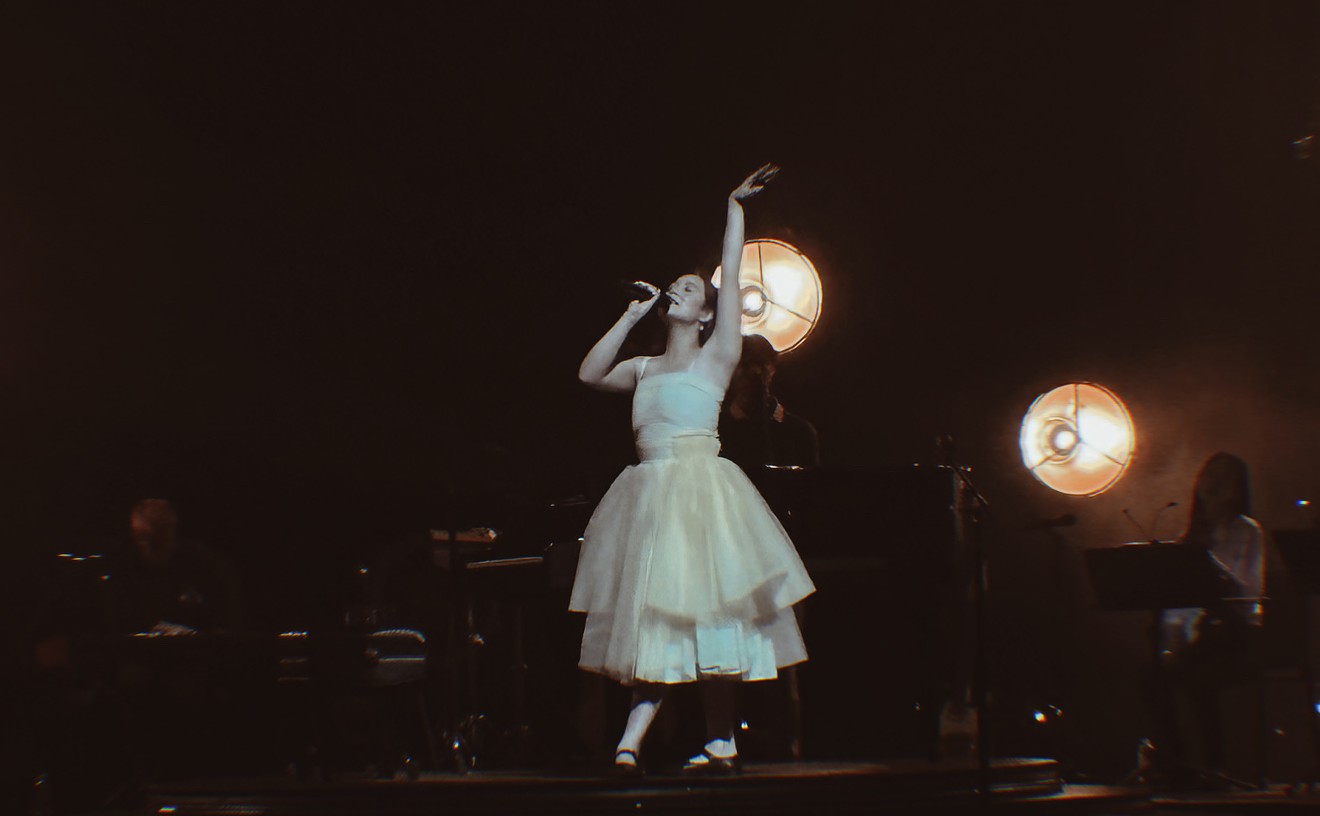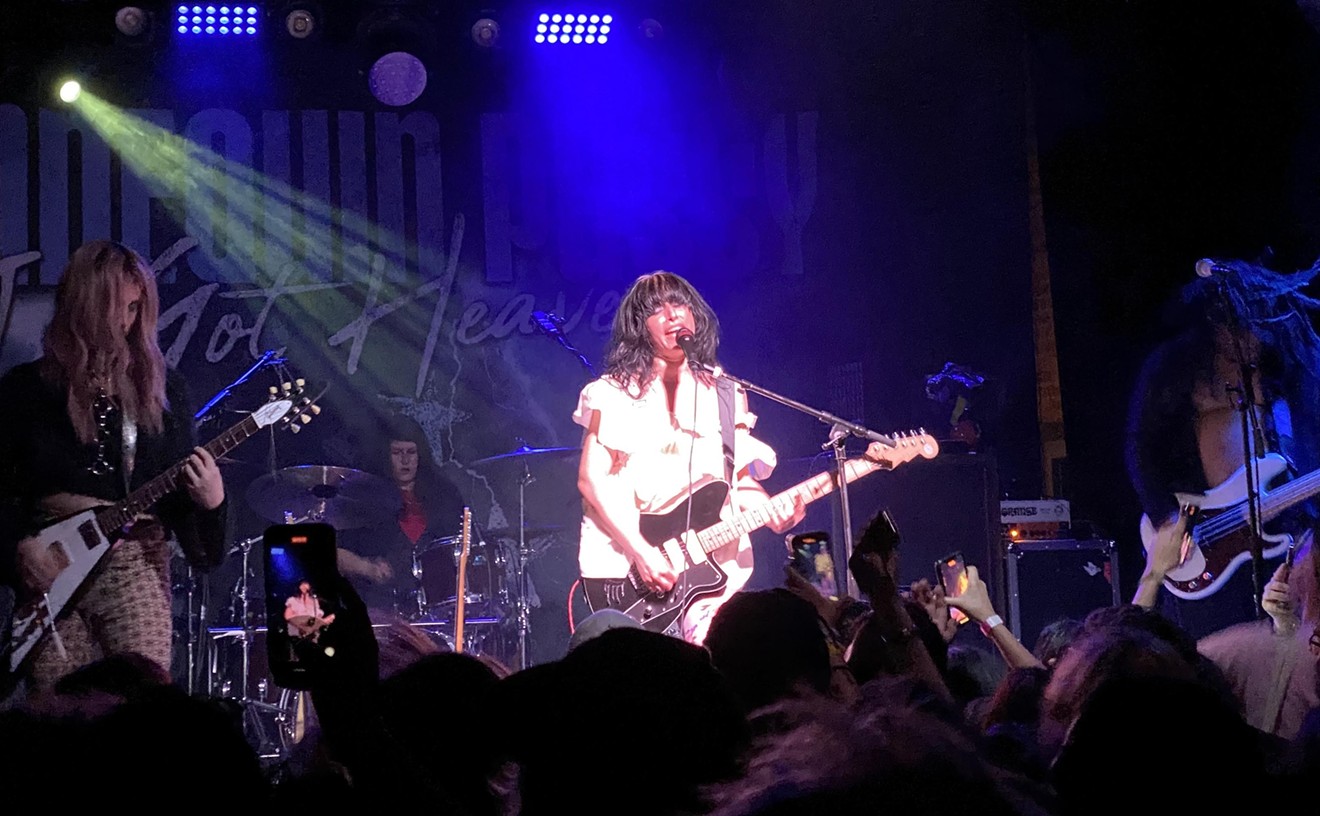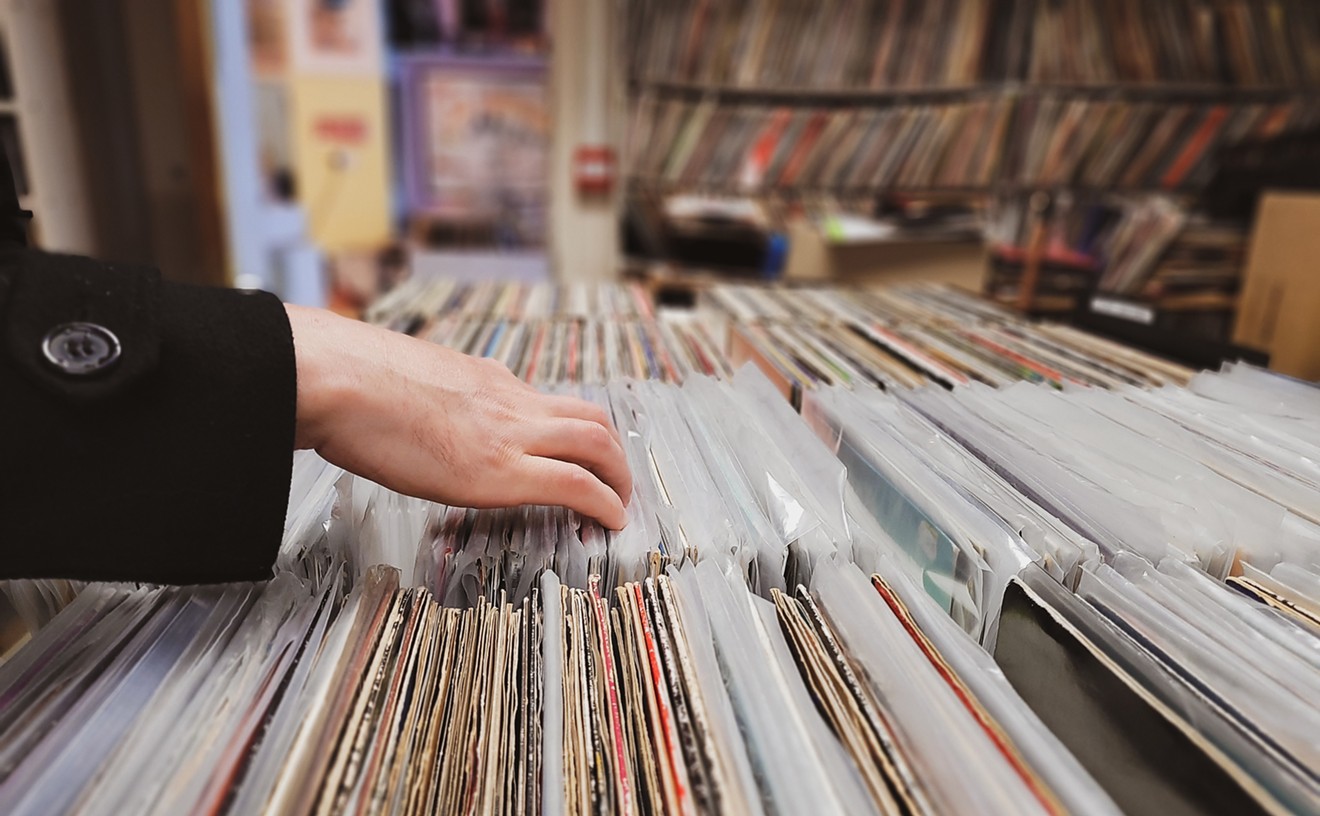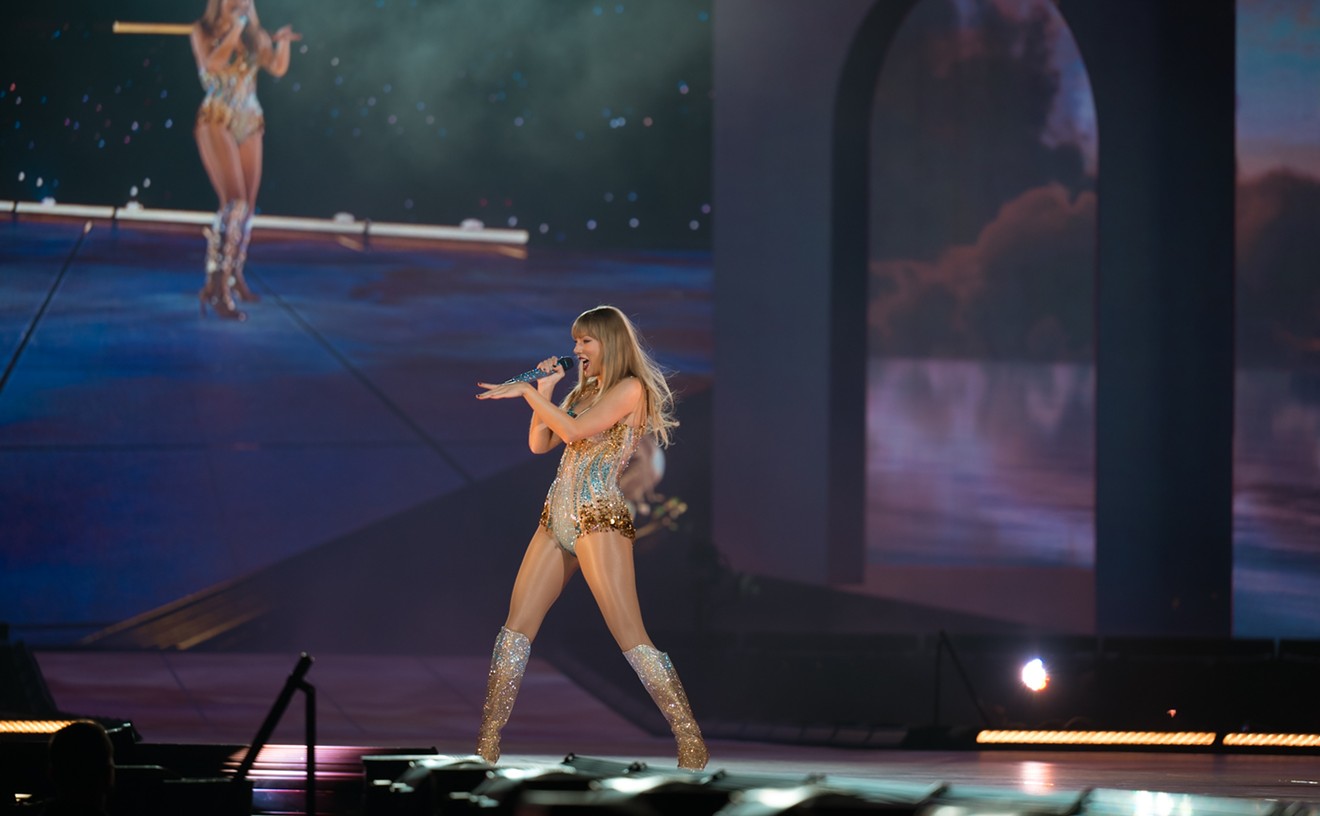This week, the Texas Musicians Museum (TMM) debuted an exhibit commemorated February 3, 1959. “The Day the Music Died” was the day Buddy Holly, the Big Bopper and Richie Valens died in a plane crash in Iowa. With rare memorabilia, the exhibit is a great addition to a museum on a mission to keep historical music memorabilia from Texas in Texas. They even have the casket that the Big Bopper was buried in.
The ceiling in the museum’s lobby is comprised mostly of a massive guitar, a stage prop Eric Clapton used for his set at the Crossroads Guitar Festival at the Cotton Bowl back in 2004. For director Tom Kreason, Texas is the center of the universe as far as music is concerned. Looking at some KZEW memorabilia, including a door from the original building, Kreason points out that many bands started tours in Dallas because the radio station was so huge.
The door came from a storage building. Perhaps it would have been trashed if not preserved by the museum. Walking up to the exhibit, Kreason stops at a display of memorabilia from Waylon Jennings, who once played bass for Buddy Holly. The items include boots, a vest, and even the 45 he played every day to start his radio show back when he was on KLLL. The song is “Detour” by Duane Eddy and it is personally signed by Jennings. Kreason notes that Eddy was married to Jessi Colter at that time, who Jennings would later marry.
There's all sorts of strange and fascinating memorabilia in this exhibit named after the famous song by Don McClean. A receipt for the suits Buddy Holly and the Crickets wore on an album cover, for example. The receipt is for five suits, but only four men appear on the cover. “Their manager, Norman Petty, said, ‘If you’re getting a new suit, I want one too,’” Kreason explains.
There is a picture of Holly, without glasses, as a teenager in his family living room. He almost looks like a young John Lennon. There are receipts for several performances from 1958, including Holly’s appearance on The Ed Sullivan Show, for which he split the profits with his band. Each man made $666 for the performance, with Holly taking a penny less than his two band mates.
There are annuals from the schools in Lubbock that Holly attended, including one from 6th grade in 1949. “The kids who went to that school were very poor,” Kreason says. “So very few could even afford to have one of these annuals. Finding one is extremely rare.” But this one is even signed by Holly, which may make it the earliest autograph from him.
There are several photos of Holly and Jennings together, taken during the infamous “Winter Dance Party Tour” shortly before the February 1959 tragedy. The pictures clearly show two young friends having a blast. Holly looks surprisingly cocky, with a cigarette dangling from the side of his mouth. “Buddy loved having Waylon around,” Kreason says. “They were very good friends.”
For several reasons, the displays for Jiles Perry "J. P." Richardson, Jr. — better known as the Big Bopper — are the most moving and surprising. There are photos of Richardson in Beaumont participating in a ridiculous radio promotional stunt involving a boat racing a car. It sure looked like fun, like something straight out of Grease. There is handwritten music for his first big hit, “Chantilly Lace,” along with music for other songs that were actually with Richardson in a suitcase at the time of his death.
This exhibit also showcases how far ahead Richardson was thinking by displaying two of the earliest examples of music videos on a television set from the '50s. “His idea was that there would be a disc you could put not only the music on, but also the videos,” Kreason says. “He was a visionary.” The video for “Chantilly Lace” may seem a little corny, but it was more or less without precedent. Richardson’s video for “Big Bopper’s Wedding” starts out with a delightfully creepy sense of humor, beginning with the star exchanging vows with what is revealed to be a mannequin when the camera pans out.
And then there is a most unusual piece of rock 'n' roll history behind some drapes: The casket that the Big Bopper was buried in after the plane crash. As it turns out, his body was moved in 2007 to a different part of the cemetery to allow for a larger headstone. Others were interested in performing an autopsy on his body to put to rest rumors of gunplay on the plane.
48 years later, the Big Bopper’s body was incredibly well preserved and showed no sign of bullet wounds. By law, Big Bopper required a new casket once the seal on his old one had been broken. “If this was anybody else's casket I’d probably tell you to properly dispose of it,” says Kreason. “But this is related to a day called ‘The Day the Music Died.’ You really can’t get more appropriate than a casket."
[
{
"name": "Air - MediumRectangle - Inline Content - Mobile Display Size",
"component": "18855504",
"insertPoint": "2",
"requiredCountToDisplay": "2"
},{
"name": "Editor Picks",
"component": "17105533",
"insertPoint": "4",
"requiredCountToDisplay": "1"
},{
"name": "Inline Links",
"component": "18349797",
"insertPoint": "8th",
"startingPoint": 8,
"requiredCountToDisplay": "7",
"maxInsertions": 25
},{
"name": "Air - MediumRectangle - Combo - Inline Content",
"component": "17105532",
"insertPoint": "8th",
"startingPoint": 8,
"requiredCountToDisplay": "7",
"maxInsertions": 25
},{
"name": "Inline Links",
"component": "18349797",
"insertPoint": "8th",
"startingPoint": 12,
"requiredCountToDisplay": "11",
"maxInsertions": 25
},{
"name": "Air - Leaderboard Tower - Combo - Inline Content",
"component": "17105535",
"insertPoint": "8th",
"startingPoint": 12,
"requiredCountToDisplay": "11",
"maxInsertions": 25
}
]










